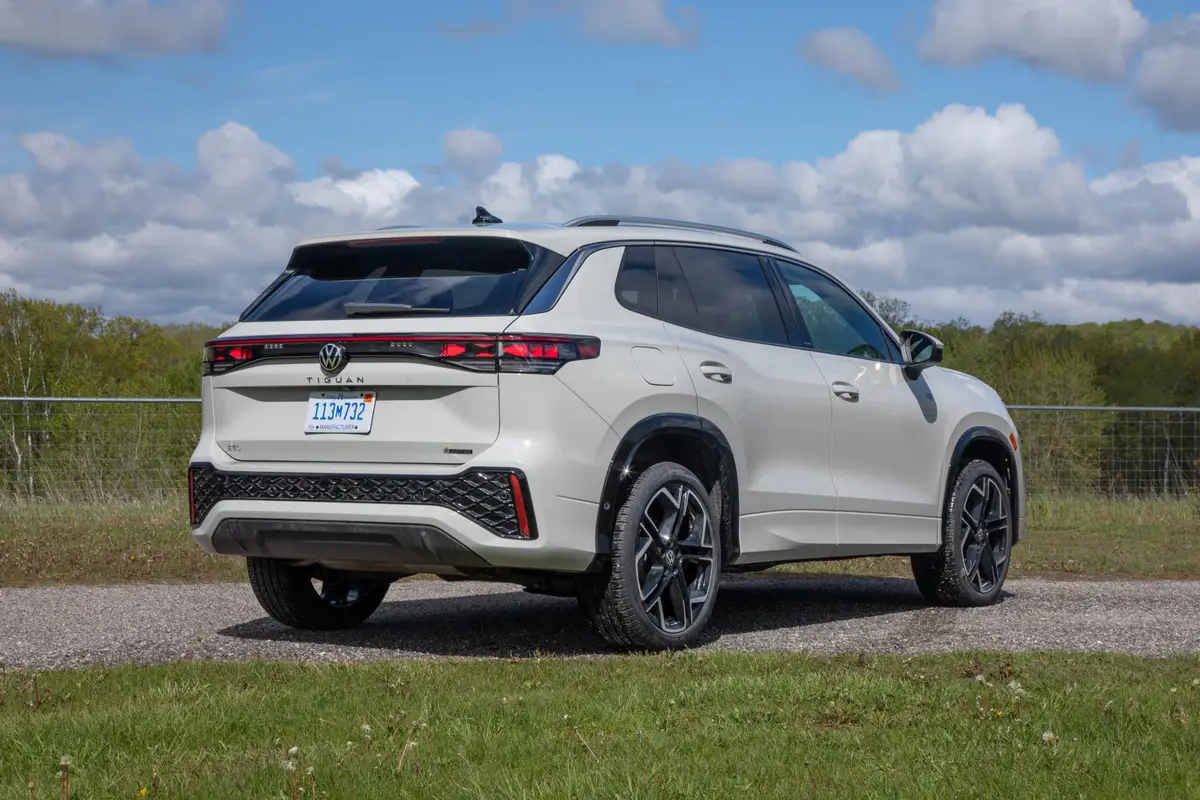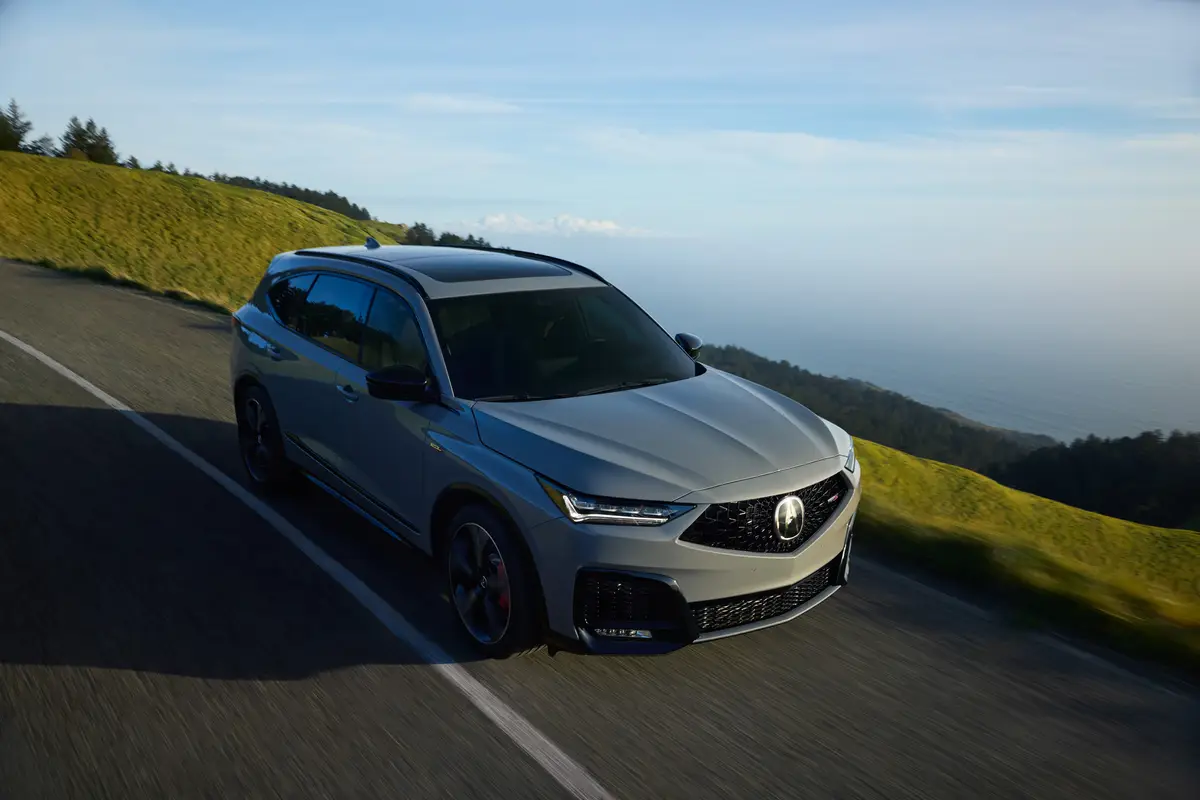chicagotribune.com's view
Wouldn’t you just love to stroll into a store and say, “I’d like that one, that one, that one, and oh, one of those. Wrap ’em up and send the bill?”
It would be especially appealing if the store you had ambled into was an Audi dealership chock full of TT coupes and roadsters.
Of course, unless you are a rock star, professional athlete, Republican or the last survivor on that island, it won’t happen, but you can dream.
Audi introduced its TT sports car for the 2000 model year, a vehicle that is one of the best examples of what automakers call derivative platform strategy.
Volkswagen provided Audi with a Beetle platform and then let Audi designers use their imaginations to create the TT. Thanks to powertrains and suspension systems, the TT and Beetle are two different machines that share the same heritage.
You see the same derivative platform strategy, for example, with the Pontiac Aztek and Buick Rendezvous sport-utility vehicles coming off the same platform as the Chevrolet Venture mini-van. Aztek is a youth-oriented SUV, Rendezvous a luxury SUV and neither look or act like a family mini-van.
The first TT was offered as a coupe with only a 1.8-liter, 180-horsepower, 20-valve, turbocharged 4-cylinder engine and a 5-speed manual transmission, no automatic. The front-wheel-drive coupe offered all-wheel-drive Quattro as a $1,750 option.
For 2001 Audi adds a roadster and a 225-h.p. rendition of the 1.8-liter with two intercoolers and a 6-speed manual. Good suddenly got better, albeit just a tad confusing as you try to unravel the 2001 offerings because there are so many flavors to choose from depending on whether you prefer open- or closed-top and above-average or high performance.
For 2001 you can get coupe or roadster with 180- or 225-h.p. engines. The 180-h.p. coupe or roadster comes with front-wheel-drive standard, all-wheel-drive Quattro an option; the 225-h.p. coupe or roadster comes with Quattro only.
With the 225-h.p. engine, you get 6-speed manual only; with the 180-h.p. engine you get 5-speed manual only. There’s no automatic in any TT, though Audi is considering a Sports Shift clutchless automatic for the U.S. market in a year or two.
We tested the 2001 TT coupe with the new 225-h.p. engine and Quattro, and the 2001 TT roadster with the 180-h.p. engine and front-wheel-drive, which prompted one of those “is the glass half full or half empty” quandaries about whether the most potent engine in a coupe or the less potent engine a roadster makes for the most pleasure.
You could easily debate that the 225-h.p. engine offers the optimum performance, but the roadster offers the optimum pleasure. Had a 225-h.p. Quattro roadster arrived for testing it would have solved the problem and left the glass overflowing. But when the TT delivery man arrives, you grab the keys and don’t ask questions so he doesn’t change his mind and shop another drive way.
With the 225-h.p. coupe with Quattro you have quick takeoffs, crisp and precise corners and turns, and 24/7 all-wheel stability and control. Function and fun at the same time.
The 180-h.p. roadster without Quattro sacrifices some off-the-line quickness, some sit-flat handling and some radials-glued-to-the-pavement self-assurance. But when you look into a clear blue sky as the wind gently tickles the brow and later watch the stars line up in formation for an evening’s viewing directly overhead without any metal or canvas obstruction, the sacrifices don’t seem nearly as harsh. By the way, TTs for the U.S. come with a manual top, those for Europe a power top. A power top would be nice.
Audi is selling every TT it can get its hands on, or about 11,000 this year, equally divided among coupe and roadster. The hope is that more will be shipped from Germany next year, but hope only counts when you are a Cubs fan.
Whether coupe or roadster, 180- or 25-h.p. engines, you’ll experience firm ride, precise steering and sure-footed handling (with the Quattro noticeably more precise and sure-footed) and a smooth shifting 5- or 6-speed.
The TT is a great-looking machine that becomes a great-acting machine when you add Quattro for pinpoint accuracy and optimum mobility and maneuverability on a variety of road surfaces in all kinds of weather.
Coupe or roadster with the 225-h.p. engine delivers the speed, but Quattro delivers the security. With Quattro the TT performs much more aggressively than the FWD version, with noticeably better vertical and lateral control.
Yet, as has been the case since TT arrived, there are annoyances.
The rounded design is superb, but that very round egg-shell shaped roof on the coupe is also very low. There’s precious little room to swing head in or out without a physics lesson in objects tending to stay in motion unless acted upon by an outside force–in TT’s case a head in motion striking a metal tube.
The wide pillars front to rear also limit visibility in the coupe, as you’ll learn the first time you back out of a parking space or pull back in after passing.
With the roadster, of course, when the top is down there’s no head hacking or visibility-obstructing pillars.
You can get those high-power, blue-tinged Xenon headlamps as an option with the TT, which make it easier for you to see at night, though sometimes what you’ll see is motorists coming at you giving you the single-finger salute for blinding them with those powerful bulbs.
Other annoyances include power-window buttons hidden behind the door handle, making it awkward to find and use; small outside mirrors that add to the visibility problem created by the thick roof pillars; seats just a bit too stiff for long-distance travel enjoyment; and cup holders mounted so far back between the front seats that you can hardly place a cup in the holder, forget about getting it out again.
Perhaps the cupholders are designed for rear-seat occupants, though since the front seat back touches the rear seat front in the coupe and there is no rear seat in the roadster, that doesn’t hold water either.
As for those occupants, whether coupe or roadster, there’s a passenger air bag cut-off switch in the glove box that requires you to use the ignition key to turn it on or off. When off, a light in the console flashes on that makes it very easy to see the bag has been deactivated.
On the positive side, the TT is decked out with brushed aluminum accent moldings in the instrument panel, gearshift lever and foot pedals. Nice decorative as well as sporty touch.
The 2001 Audi TT coupe with Quattro and the 225-h.p. engine with 6-speed manual that we tested starts at $35,750; the FWD roadster and 180-h.p. engine and 5-speed starts at $32,850.
Standard equipment includes four-wheel anti-lock brakes; full-time traction control ( roadster); 17-inch performance radials (16-inch roadster); dual front and side air bags; fully galvanized body with aluminum hood; quick-ratio power steering; power locks; headlight washers; power mirrors with defoggers; power windows with “pinch” protection so they stop and retract if object is in way; electronic climate control with dust and pollen filters; AM /FM stereo (80 watt/six speakers coupe, 120 watt/seven speakers roadster) with cassette; remote keyless entry; electronic cruise control; leather (“premium” Valcona coupe/”fine” Nappa roadster); and tilt and telescoping steering column.
And the coupe comes with split/folding rear seat backs so you can put a duffel or grocery bag in back (since the seat isn’t large enough for a human).
The coupe and roadster came with optional audio upgrade with Bose premium sound and six-disc CD changer at $1,200, and a premium package that includes heated seats, Xenon headlights and six-spoke alloy wheels with 17-inch performance radials in a $1,450 package.
2001 Audi TT Quattro coupe
Wheelbase: 95.6 inches
Length: 159.1 inches
Engine: 1.8-liter, 225-h.p., turbo 4 cylinder
Transmission: 6-speed manual
Fuel economy: 20 m.p.g. city/28 m.p.g. highway
Pluses: Packaging a 225-h.p. turbo 4 and all-wheel-drive Quattro system in a stunningly designed sports car–bless you Audi. Off-the-line performance teamed with superior handling brings a dream to reality.
Minuses: Dream comes with a few nightmares, perhaps brought on by the frequency of knocking your noggin each time you attempt slipping in or out of the cabin. Low roof line and wide pillars limit side and rear vision. Xenon headlights will not win you many friends among those approaching at night.
Latest news



